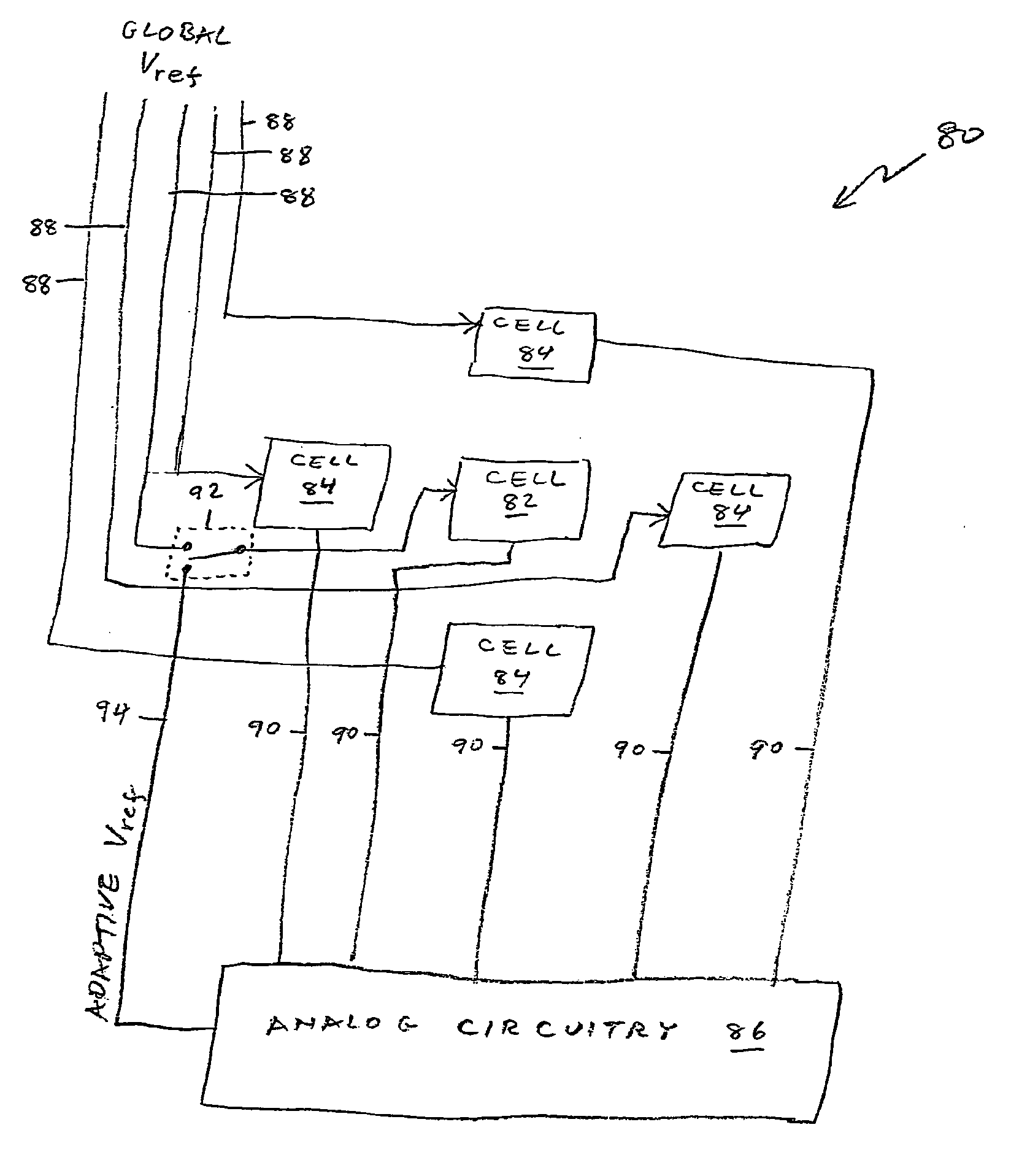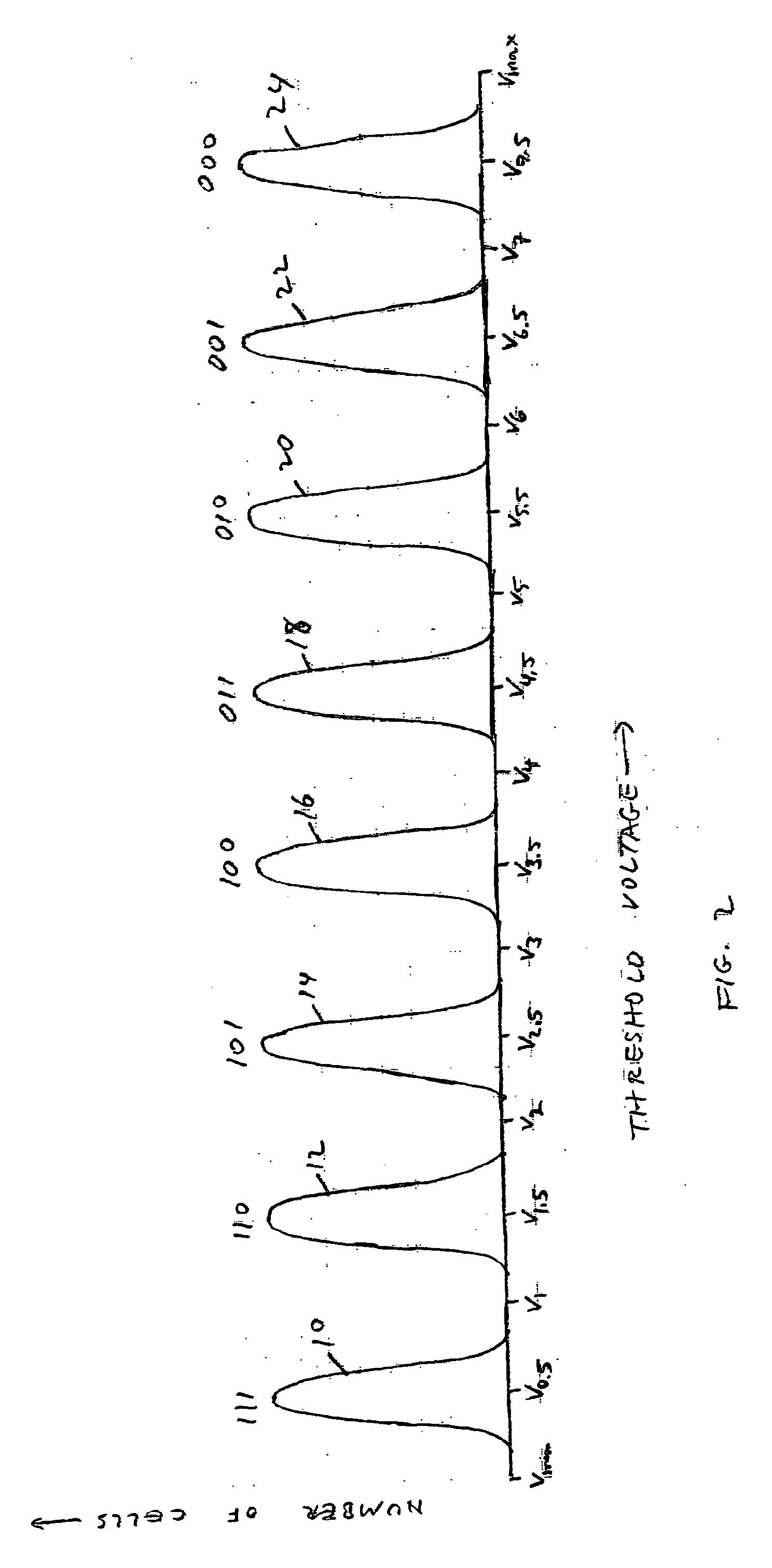Flash memories with adaptive reference voltages
a flash memory and reference voltage technology, applied in the field of flash memories, can solve the problems of limiting the time that data can be reliably retained in a flash memory, finite precision of read/program circuitry, and unacceptably high bit error ra
- Summary
- Abstract
- Description
- Claims
- Application Information
AI Technical Summary
Benefits of technology
Problems solved by technology
Method used
Image
Examples
Embodiment Construction
The present invention is a set of methods for reading flash memories more reliably than is possible according to the prior art.
The principles and operation of a flash memory according to the present invention may be better understood with reference to the drawings and the accompanying description.
Fractional Threshold Voltages
The basic innovation of the present invention is that, in addition to comparing the threshold voltages of flash cells to integral reference voltages, the threshold voltages also are compared to fractional reference voltages. Returning now to the drawings, FIG. 2 is FIG. 1 with the addition of eight fractional reference voltages, V0.5, V1.5, V2.5, V3.5, V4.5, V5.5, V6.5 and V7.5, in the centers of their respective voltage bands. In general, a flash cell for storing m bits has 2m voltage bands and so has 2m−1 integral reference voltages. For example, in the case of a type 1 flash memory whose cells are read with m comparisons of a flash cell's threshold volt...
PUM
 Login to View More
Login to View More Abstract
Description
Claims
Application Information
 Login to View More
Login to View More - R&D
- Intellectual Property
- Life Sciences
- Materials
- Tech Scout
- Unparalleled Data Quality
- Higher Quality Content
- 60% Fewer Hallucinations
Browse by: Latest US Patents, China's latest patents, Technical Efficacy Thesaurus, Application Domain, Technology Topic, Popular Technical Reports.
© 2025 PatSnap. All rights reserved.Legal|Privacy policy|Modern Slavery Act Transparency Statement|Sitemap|About US| Contact US: help@patsnap.com



